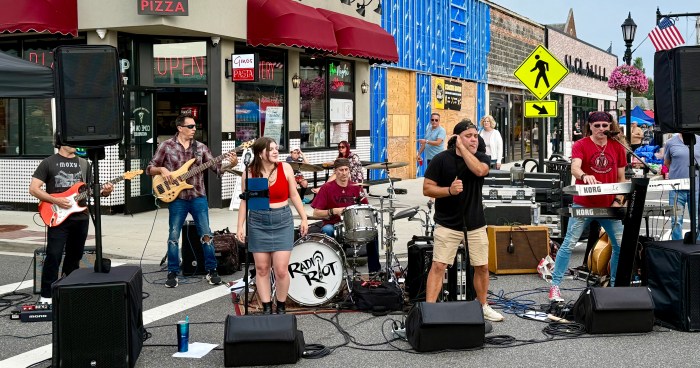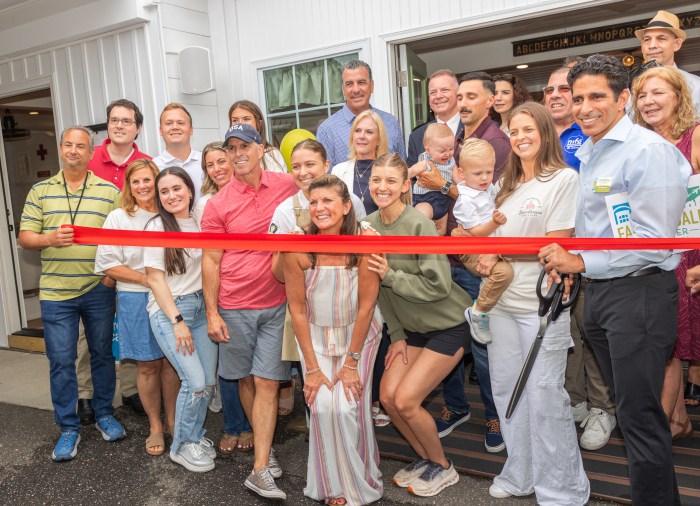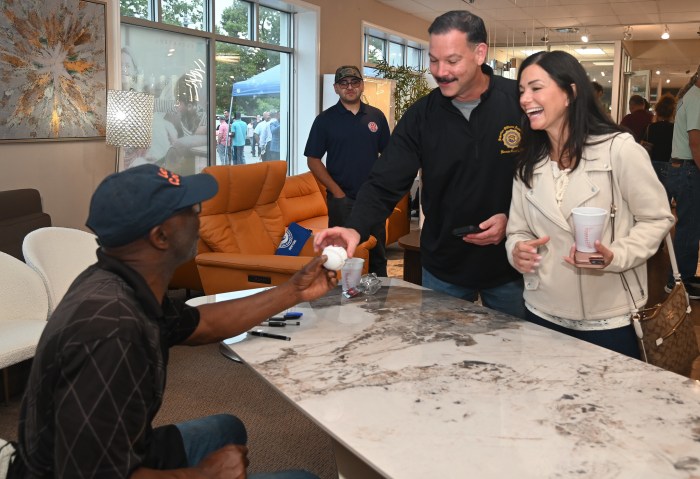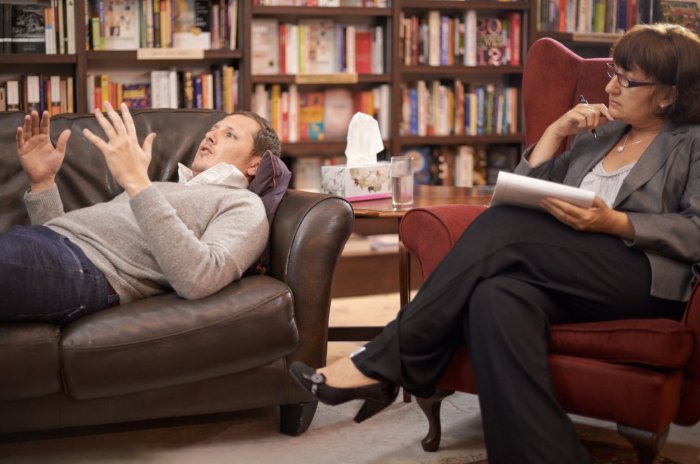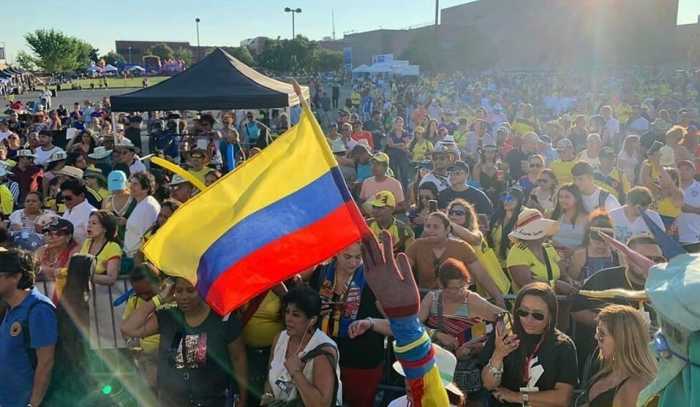NC Elections Commissioner Questions Validity
The Nassau County Board of Elections has been doing a “trunk show” at venues all over the area to show voters how the new optical scanner machines work. Nassau County is following the new guidelines of the Help Americans Vote Act (HAVA) that was passed by the federal government in Oct. 2002 when then-President George W. Bush signed it into law.
The aim of the legislation was to enhance voter access, prevent fraud, and modernize elections. Each state was to set up its own system.
“The agreement reached in the joint conference committee represents the first major overhaul of New York State’s election process in over 50 years,” said Senator John Flanagan (R-East Northport), chair of the Senate Elections Committee.
HAVA mandates that states and localities upgrade many aspects of their election procedures, including voting machines, registration processes and poll worker training. The implementation has been left up to each state, which allows for varying interpretations of the Federal law. That includes the replacement of punch card and lever voting machines. Although Suffolk County Supervisor Steve Levy tried to fight having to change their lever machines, that battle was lost.
The HAVA requirement is that all voting systems be auditable and have a permanent paper record with a hand-count audit capacity as an official record for any possible recount. The lever machines do not have a paper trail.
The new machines have a bin that collects the ballots so that in case of a problem they can be counted. There is a paper trail.
The machines suggested were optical scanners and (DRE) touch-screen voting, explained Judie Gor-enstein, president of the League of Women Voters of Huntington.
Gorenstein said in a telephone interview that the LWV of Suffolk County is “very pleased” with the new machines. Suffolk County and Nassau County have chosen the same machines but by different manufacturers so there are small differences between the ballots and the machines – “small nuances.”
The important thing is, she said, “They have taken care of security, voting once, the paper ballot is scanned and dropped into a box which means that if a hand vote is needed, every ballot can be counted.”
She added that voters found write-in votes easier than the touch-screen system. She said there was a security system in place so that if the power goes down, the machine stays on for four hours. If the optical scanner is not working, there is a place to put the ballot to be counted later.
A possible criticism is that New York State has a “full face ballot, which means it uses one sheet of paper – so it is a lot smaller in all of the state. The propositions can be on the back of the sheet,” Gorenstein said.
Another concern is that with fewer machines per voting place there will be lines. Gorenstein said there was a pilot project to test the voter machines upstate and the major problem was an issue of privacy.
“People could see your vote,” she said. “In Suffolk County we have privacy booths and a sleeve to put the ballot in as does Nassau County. All of these machines have been used all over the country. Florida initially bought the DRE machines and replaced them with the optical scanner machines,” she said.
You will remember that it was the “story of the falling chads” that started the issue of voting differences in the nation that HAVA is trying to correct.
NC’s New Machines
Nassau County Board of Elections Commissioner William Biamonte, (D) said, “The new Nassau County voting machines look like giant recycle bins with a laptop on top and that is actually what they are. The actual scanner is contained in the laptop. The bin is to collect the ballots after the vote. The voter walks up to the machine and inserts a ballot – like putting a dollar bill into a vending machine.
“The new voting machine is also programmed to make sure you vote for all the candidates. It checks both undervotes and overvotes. If you under-voted it means you didn’t vote for everyone you could. In that case the machines give you two options on the touch screen. A red button and a green button.
“If you under-voted you have the option of taking out the ballot and fixing it or to press green and that will be your choice.
“If it is an over-vote you have to get a new ballot. It is all very straightforward,” said Commissioner Biamonte. “We will have a kiosk in Roosevelt Field for around-the-clock demonstrations for the public.”
Biamonte has issues with the whole process. He said, “The state mandated we use the system but sent minimal funding for it. They sent $700,000 and we have 900,000 voters so any way you look at it there is a financial problem.
“We send out voter check cards telling people they are registered to vote and giving them their voting place. If the cards come back to us as undeliverable we purge the names from the system. We send out 900,000 cards.”
He said they would use the cards to instruct people to watch a new training video they have created. The new machines will operate in a privacy booth. Most people will be able to use the optical scanning machine.
For those who are challenged – blind, paraplegic, or physically handicapped in some way – there are “handicapped” machines. They come with instructions and a keyboard. There is a tactile component, audio component; and a sip and puff device. It is a tube held in the mouth that you blow into, to work the machine.
Cautionary Tale
The most important thing the education process is trying to teach is not to overvote. If someone votes for two people for the same position the machine will ask to override that vote. The problem he said is that some people might allow the override out of embarrassment, rather than taking more time at the machine and filling out a new ballot.
Currently there is a court case being looked into at the Brennan Center of Justice (Justice William Brennan) as well as the NAACP, for protective class groups.
“It is a programming flaw,” said Commissioner Biamonte. He said he and Commissioner John DeGrace (R) have both been critical of how the state has rolled out the machines and are starting their own lawsuit since they view the machines as dysfunctional. [The NC Board of Elections always has two commissioners, a Democrat and a Republican.]
“The California Secretary of State hired computer scientists to look into their hack-ability,” Biamonte said. I am not a big fan of electronic voting. It comes down to that the president and Congress were embarrassed with George W. Bush being elected by the Supreme Court.
“The Help America Vote Act said there needed to be a change. They are forcing us to correct a problem that didn’t exist in New York State. In Florida there were different voting systems. When they wanted to check the vote there was no one way to count them. It was a dysfunctional system. Here in Nassau County when there was a question of the voting figures we found a difference of 386 votes out of 270,000. It shows that our machines are capable of a recount, and both sides agreed.”
The HAVA regulations say that municipalities have to replace punch card machines and lever voting machines. They also have to build the overvote and undervote corrections into the system. They also want alternate languages available and a handicap voting machine. (Suffolk County has provided a website suffolkvotes.com in both Spanish and English.) It is an initiative to modernize elections across the nation.
The Cost to Vote
Commissioner Biamonte was concerned with the cost. “We are forced by the new system to spend $15 million in educating people about the technology as well as other ongoing costs.
“They print ballots that cost 55 cents apiece, they are 8 and a half inches by 24 inches. They have to be purchased from the voting machine company at a number that is 110 percent of voters. We have 990,000 voters and we have to add 10 percent for errors. In 2008, 645,000 people came out to vote – and it was a high turnout. So if we have to order 110 percent for the voting —- I did a graph and over four years we would have purchased 340,000 more than needed.
“Using those numbers, and at 55 cents a copy, those extra ballots will cost Nassau County a great deal of money to print and it will take $2.1 million out of our general fund.
“Why do we need 110 percent? We have to assume they will all show up to vote,” he stated.
Education Costs
Another cost is for educating the public on the use of the machines. It is a major program and involves staff members going out to educate voters, and testing the machines to be sure they work.
“We have had problems. There is also a major voter education for the election inspectors whose average age is 72. They are often retired people who can be there from 5:30 a.m. to 10:30 p.m. for not a lot of pay. The board of elections is a bipartisan group. The chairman of their party appoints the commissioners. The board gets recommendations from the zone leaders – for instance, for 20 districts they get 40 recommendations – in order to have a bi-partisan election,” Biamonte said.
As for the election inspectors, he said, “We have to train them and test them to be sure they can boot up the machines; as well as training new inspectors; and not getting funded for the extra work. Our staff has been going out on the weekends such as at the Bellmore Street Fair; and working overtime with no reimbursement to the county – and for no reason. What problem are we trying to fix?
“We are in state court now before Judge Woodard with a request for a court ordered discovery on the machine’s technology. The briefs are identical for the state board and the voting machine company. The judge ordered a court-ordered discovery and we are going to produce a report on how the machines work. The reason is that we tested the software and there are problems we discovered.
“In California, Bruce McPherson was appointed Secretary of State by Governor Arnold Schwarzenegger and Debra Bowen has picked up the mantle. California uses optical scanners and McPherson contacted scientists at UC Davis and UC Berkeley to analyze them. They published a report that these machines can be easily hacked in a matter of minutes.”
Biamonte said the county still has 1,400 of the old lever machines. They now have 1,200 of the new optical scanner machines as well as 450 of the handicapped accessible machines.
“The reason for the difference in numbers is that the lever machines can only be used by 850 voters. If they had 1,000 voters, they needed a second machine. The optical scanner can hold up to 3,500 voters’ responses.
“At each polling place there will be one optical scanner for each district and one handicap accessible scanner for the entire polling place.
“In a lot of the polling places where two lever machines were needed, they will get one optical scanner instead,” he said.




